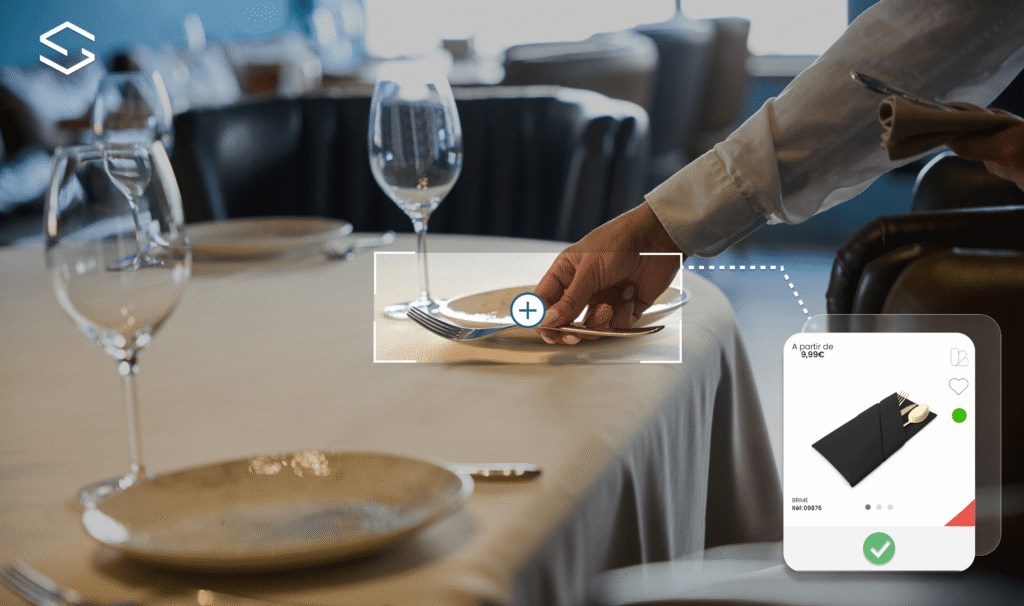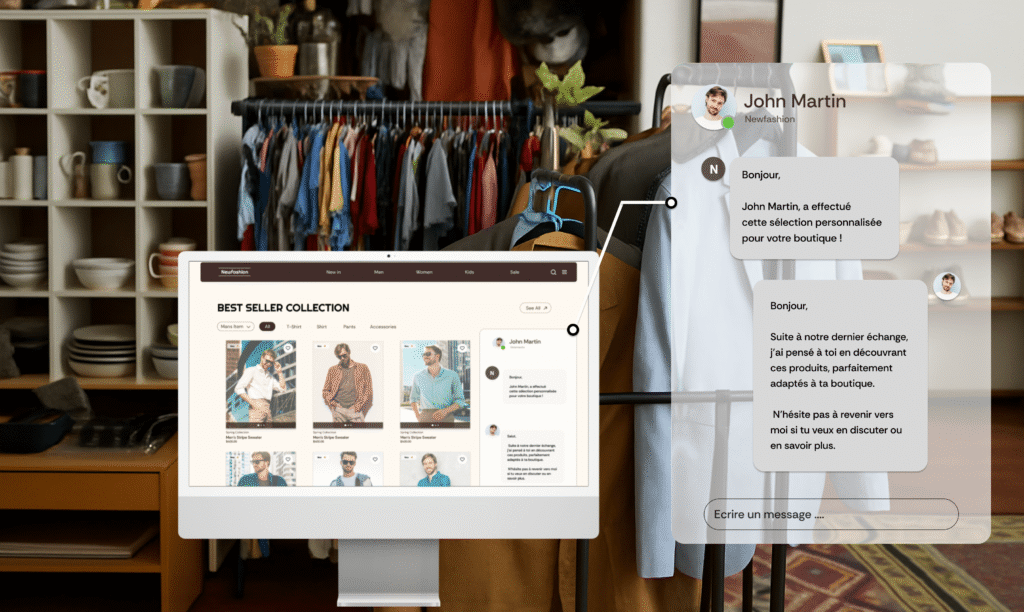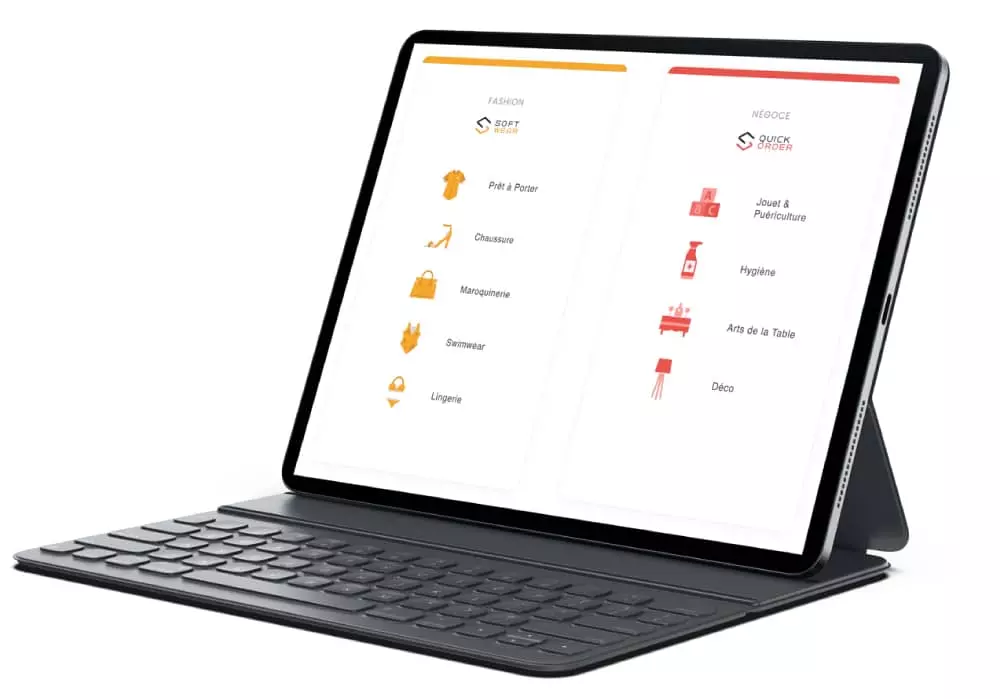In B2B, buyers — whether distributors, resellers, wholesalers, or retailers — expect their professional purchasing experience to be as simple, smooth, and service-oriented as in B2C.
Faced with this ongoing shift, what levers can brands use to meet B2B buyers’ expectations and remain competitive?
Here’s a look at 9 key B2B e-commerce trends to watch closely.
1. A B2B customer experience aligned with B2C standards
More than ever, B2B platforms are taking inspiration from B2C user experiences, guided by two key principles: simplicity and intuitiveness.
Professional buyers no longer want to compromise between efficiency and ease of use. They compare, search, and expect a seamless journey — just like on a B2C site.
This means offering clear product presentation, intelligent search, powerful filters, rich visuals, and above all, a smooth, friction-free ordering process.
2. More immersive content to inform and inspire
AI-generated videos, 3D visuals, augmented reality — new content formats are becoming more inspiring, improving product understanding and boosting conversions.
By enriching product pages with multi-angle visuals, lifestyle images, 360° views, tutorial videos, or virtual demos, you help buyers better visualize products and build stronger purchase confidence.

3. A scalable B2B platform through a modular approach
Brands can now build their B2B platforms step by step according to business priorities.
They may start with a core system including a digital catalog, CRM, and order module, then gradually add other features such as after-sales service, returns management, upselling, or cross-selling.
This flexibility allows them to test, refine, and scale their platform over time.
4. Increasing services
According to Fevad recent study « B2B e-Commerce and purchasing », “79% of buyers are very satisfied with the ease and speed of placing their last online order” but many would still like more autonomy through online services:
“51% of buyers would like to track their orders more independently […], 48% wish to simplify product searches.”
A finding that merely confirms an underlying trend : beyond order-taking, the B2B e-commerce site is evolving into a true service portal, designed to simplify the entire customer relationship.
Dedicated client areas, easy access to product information, pricing and terms, current orders, purchase history, personalized suggestions, online support requests… all these features save buyers time and boost satisfaction.
5. Omnichannel journeys and hybrid sales
B2B e-commerce is not a standalone channel. It fits into an omnichannel ecosystem where stores, B2B e-commerce sites, field sales reps and customer service work together.
A client may start an order online, complete it with their sales rep on site or remotely, check their negotiated prices, review their purchase history and reorder directly from their personal account.
This complementarity requires seamless data synchronization across all connected sales channels.
Sales representatives thus move toward a more strategic advisory role, focused on analyzing buying behavior, personalizing offers, and identifying new opportunities.
6. Smart personalization as the new standard
In B2B, every client is unique — with specific pricing, negotiated terms, distinct product histories, delivery constraints… Platforms must reflect this tailor-made relationship.
Personalized catalogs, “Shop the Look” recommendations and smart product suggestions based on store profile or order volumes save buyers time while making them feel understood and valued.

7. Smoother payment solutions
Payment remains a critical step in the buying journey. New trends are emerging to streamline transactions and reduce cart abandonment.
Beyond traditional methods (payment on account, credit lines), BNPL (Buy Now, Pay Later) is gaining ground in B2B. It allows buyers to receive products immediately while spreading payments over time through a financial intermediary.
The goal: turn payment into a conversion lever rather than a friction point.
8. AI and data, driving sales performance
Digital tools generate a wealth of valuable data : purchase frequency, client interactions, average order value and more…. By leveraging this data, sales teams can anticipate needs, refine offers and optimize performance.
AI further enhances this by automating and improving key processes :
– Virtual assistants and chatbots can handle complex customer service requests
– Predictive analytics help forecast restocking needs, prevent stockouts…
– Marketing gains precision through real-time targeting and personalized recommendations.
These AI-powered tools also feed new interaction data back into analytics systems, constantly refining algorithms and improving commercial performance.
These technological developments are gradually influencing B2B buyers’ behavior, as shown by the Fevad study “Key figures for e-commerce 2025” :
– Over one in two buyers has already used automated chat services (Chatbots) on websites or apps, and 34% in a professional context.
– Generative AI tools such as ChatGPT, Google Gemini or Microsoft Copilot are now becoming part of professional purchasing journeys.
9. Security, trust and compliance: pillars of credibility
Behind innovation and seamless customer journeys lie essential expectations: security, compliance, and reliability.
With the rise of digital transactions, companies must provide solid guarantees to professional buyers, including:
- Secure access with multi-level authentication and clear user rights management
- Full traceability of orders and actions within each client account
- GDPR-compliant hosting, with data encryption and legal compliance
- A reliable infrastructure ensuring smooth navigation even during high-traffic periods
These elements reassure buyers and foster long-term trust.
B2B buyers’ expectations are rapidly evolving toward speed, simplicity and personalization.
To stay competitive, brands must rethink their approach by combining technological innovation, flexibility and high-quality service, delivering clear, efficient, and secure customer journeys perfectly aligned with new digital habits.
See also
B2B e-Commerce : what you need to get started








